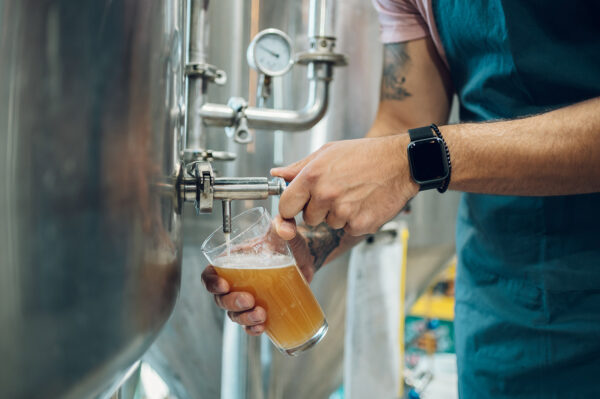Wildfire Season in California
With lives lost, property destroyed, and over half a million people facing power cuts, calling California wildfires disruptive would be an understatement. As of October 13, CAL FIRE reported 4,878 fires and over 46,996 acres burned for 2019.
At least two people have been confirmed dead in wildfires in Southern California, officials say. Multiple fires are still burning in the area. https://t.co/O2CshECvhR pic.twitter.com/JspvOh6QYu
— CNN Breaking News (@cnnbrk) October 13, 2019
Today, news also broke about the Kincade fire in Sonoma County; an overnight wildfire that has engulfed over 10,000 acres of land and has not been contained. And with the Santa Ana winds picking up in Southern California, the coming months are expected to have even greater fire potential across the entire state.
INFERNO EMERGENCY: The Kincade fire has exploded to a massive 10,000 acres overnight, driven by dry conditions and strong wind gusts.
— ABC News (@ABC) October 24, 2019
The cause of the wildfire is currently under investigation as firefighters struggle to keep up. https://t.co/F2wiQc4CEV pic.twitter.com/7wqja2IE6B
Licensed cannabis business operators in California must remain mindful of specific compliance regulations that still apply to them during disasters. These compliance requirements are specific to the state cannabis regulatory authority that has licensed the operation.
PG&E continues to track dry, offshore wind event for Wednesday/Thursday. Power may need to be turned off for safety to 184,000 customers in parts of 17 counties. Tehama County was added Tuesday night (748 customers).https://t.co/c41dIM1aGh pic.twitter.com/ybQcdQINiA
— PG&E (@PGE4Me) October 23, 2019
Regulatory Bodies Governing Cannabis in California
California has three separate state licensing authorities charged with licensing and regulating commercial cannabis activity in California:
- The Bureau of Cannabis Control (“Bureau” or “BCC”) is the lead regulatory agency overlooking commercial cannabis operations in California. The Bureau is responsible for licensing and regulating cannabis retailers, distributors, testing laboratories, microbusinesses, and temporary cannabis events. § 5038 of the Bureau of Cannabis Control’s regulations covers the disaster relief protocol for licensees.
- CalCannabis Cultivation Licensing (CalCannabis), is a division of the California Department of Food and Agriculture (CDFA). CalCannabis licenses and regulates commercial cannabis cultivators in California. § 8207 of the CalCannabis regulations covers the protocol for relief during disasters.
- Manufactured Cannabis Safety Branch (MCSB) is a division of the California Department of Public Health (CDPH) and is responsible for licensing and regulating all commercial cannabis manufacturing in California. Disaster relief is covered by §40182 of the regulations of the Manufactured Cannabis Safety Branch of the CDPH.
Defining a Disaster
All three state-wide cannabis regulatory bodies (BCC/CalCannabis/MCSB) define “disaster” as a condition of extreme peril to the safety of persons and property within the state or a county, city and county, or city. The cannabis regulatory bodies–BCC, CalCannabis, and Manufactured Cannabis Safety Branch–list natural and man-made disasters caused by such conditions as:
- Air pollution
- Fire
- Flood
- Storm
- Tidal wave
- Epidemic
- Riot
- Drought
- Terrorism
- Sudden and severe energy shortage
- Plant or animal infestation or disease
- Governor’s warning of an earthquake or volcanic prediction, or an earthquake, or similar public calamity
- Other than conditions resulting from a labor controversy, for which the Governor has proclaimed a state of emergency in accordance with Government Code sections 8558 and 8625, or for which a local governing body has proclaimed a local emergency in accordance with Government Code sections 8558 and 8630.
Compliance Requirements for Cannabis Businesses During Disasters
Each cannabis licensing authority (BCC/CalCannabis/MCSB) can exercise its discretion to provide temporary relief from specific regulatory requirements and from other licensing requirements when allowed by law. Temporary relief from specific licensing requirements is issued for a reasonable amount of time in order to allow the cannabis business to recover from the disaster.
The three cannabis licensing authorities (BCC/CalCannabis/MCSB) are almost identical in most compliance requirements:
1. Requesting Relief and Inability to Comply Notification
If a licensee is unable to comply with any licensing requirements due to a disaster, the licensee may notify the relevant cannabis licensing authority (BCC/CalCannabis/MCSB) of an inability to comply and request relief from specific licensing requirements. For Bureau licensees, this can be done by submitting the Notification and Request Form, BCC-LIC-027 (New 10/18).
2. Moving Cannabis Goods Immediately (Without Prior Permission)
Wildfires, like many disasters, are unpredictable. If there isn’t any time to secure permission and the licensee needs to move any cannabis goods stored on the licensed premises to another location immediately to prevent loss, theft, or degradation of the cannabis goods from the disaster, the licensee may move the cannabis goods without obtaining prior approval from the relevant cannabis licensing authority only if the following conditions are met:
- The cannabis goods are moved to a secure location where access to the cannabis goods can be restricted to the licensee, its employees, and contractors;
- The licensee notifies the relevant cannabis licensing authority (BCC/CalCannabis/MCSB) in writing that the cannabis goods have been moved and that the licensee is requesting relief from complying with specific licensing requirements pursuant to subsection (a) of this section within 24 hours of moving the cannabis goods;
- The licensee agrees to grant the Bureau access to the location where the cannabis goods have been moved to for inspection; and
- The licensee submits in writing to the relevant cannabis licensing authority (BCC/CalCannabis/MCSB) a request for temporary relief that clearly indicates what statutory and regulatory sections relief is requested from, the time period for which the relief is requested, and the reasons relief is needed for the specified amount of time. The request for temporary relief must be submitted varies by the cannabis licensing authority, and must be submitted:
- BCC licensees: Within 14 calendar days of moving the cannabis goods.
- CalCannabis licensees: Within 10 calendar days of moving the cannabis goods
- MCSB licensees: Within 10 calendar days of moving the cannabis goods
3. Inapplicability of Certain Regulations
As per the disaster relief regulations of each licensing authority, licensees facing the threat of disasters shall not be subject to an enforcement action for a violation of a licensing requirement in which the licensee has received temporary relief.
As per §5038 (g) of the Bureau of Cannabis Control’s Regulations, licensed premises that has been vacated by a Bureau licensee due to a disaster shall not be deemed to have been abandoned or quit under section 5022 of the Bureau’s regulations. Similarly, as per §8207 (g) of the CalCannabis Cultivation Licensing regulations, a licensed premises that has been vacated by a CalCannabis licensee due to a disaster shall not be deemed to have been surrendered, abandoned, or quit as per section 8208 of the CalCannabis regulations.
We Are Here to Help
Licensees need to be familiar with the compliance requirements of their cannabis licensing authority. Familiarity with the disaster relief regulations can help licensees prepare ahead of time and remain compliant during uncertain times. If you need help submitting a notification (or determining the necessity of submitting a notification) during a wildfire please contact the cannabis industry regulatory compliance attorneys at Rogoway Law Group for help regarding disaster relief.



